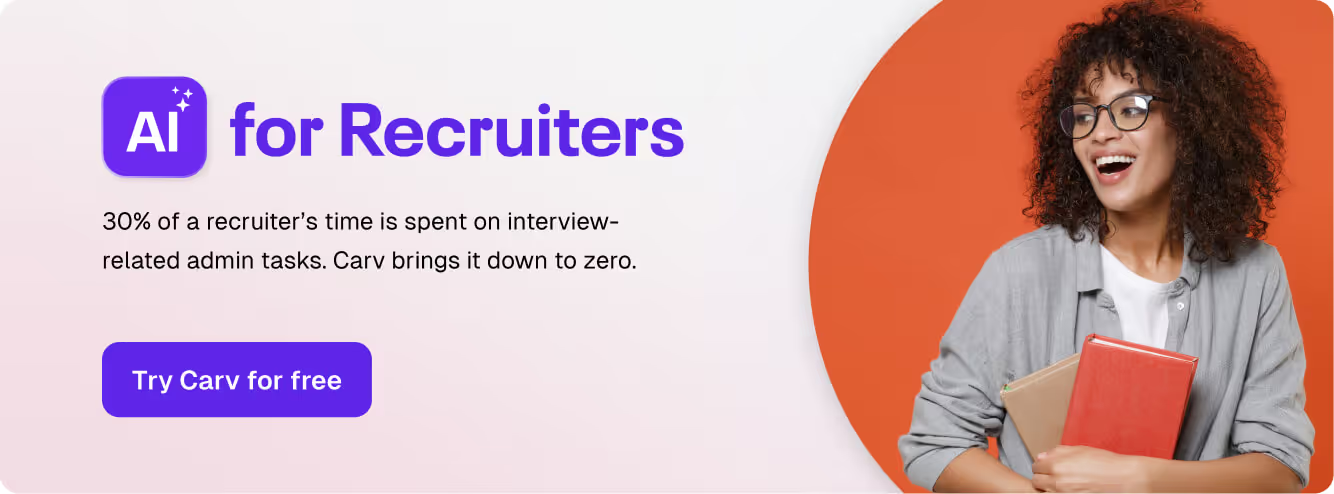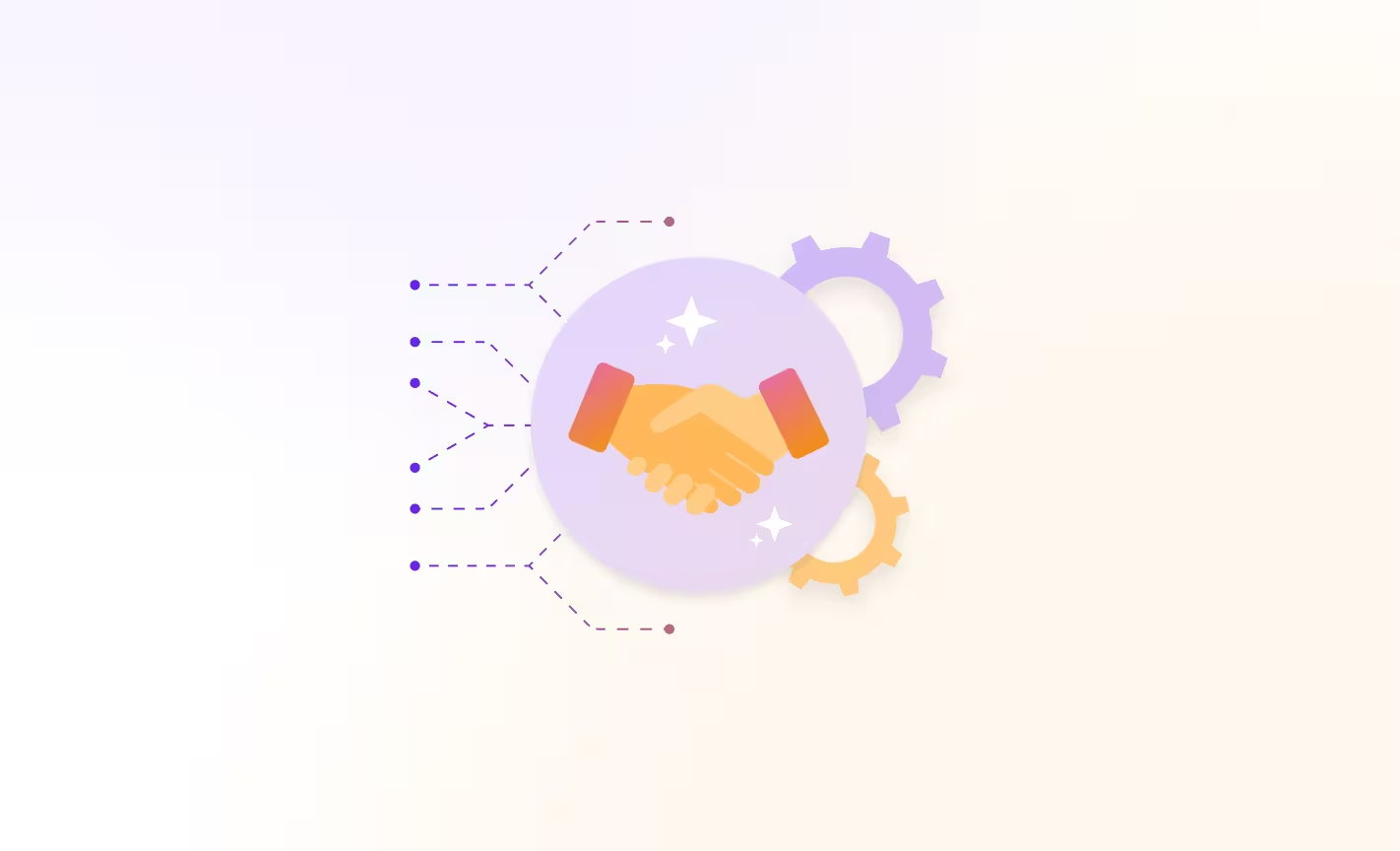Exit interviews aren’t just about ensuring your departing employee leaves on a positive note - although that matters too, of course.
These interviews give you a rare opportunity to learn things about the business you might not already know. They allow you to gain hugely valuable insights you can use to improve employee experience at your company, reducing further employee turnover as a result.
It doesn’t matter how long an employee has worked at your company — or how positive the working relationship is — these interviews can be sensitive for both parties.
In fact, in my experience, the stronger the relationship, the harder these conversations can be.
So let’s see how to prepare for and navigate exit interviews with professionalism so your staff always move on to their new role on a positive note.
Preparing the interview
A huge part of ensuring the offboarding process goes well is putting time into the pre-interview preparation. As the cliché goes, “If you fail to prepare, prepare to fail.”
There are 5 main steps to exit interview prep you’ll want to cover:
Find the right environment
Creating a comfortable and confidential environment for the interview will have a big impact on how the interview goes. If your interviewee doesn't feel entirely comfortable, they’re not likely to give you honest feedback.
For example, if you hold the interview in a room that doesn’t have adequate soundproofing, the interviewee will be less likely to give any negative feedback for fear that others can hear them. A room with glass walls will create the same environment (even if they’re soundproofed) where employees will be less honest about their experience as it feels less private.
If you’re hosting the interview as a video call, take the call in a private room rather than at your desk. Sure, you may be using headphones, but this set-up won’t tell the employee you take confidentiality very seriously.
We know these interviews are sensitive, so you need to show the employee they have complete confidentiality. Location is a big part of that.
Choose the right interviewer
Another factor that will impact an employee’s decision on whether to answer exit interview questions honestly will be who they’re speaking to. This is why choosing who conducts the interview is so important. You want to choose an interviewer who ticks all of the following boxes:
- They’re a skilled communicator
- They’re an empathetic listener
- They’ll be perceived as neutral and trustworthy by the departing employee.
In some cases, this might involve selecting someone from outside the employee's direct chain of command to ensure impartiality. A second- or third-line manager, or even the recruiter who originally hired the employee, can be a good option.
Whoever you select to take the interview, let the interviewee know in advance and give them the option to request a different interviewer if the employee feels it’s necessary.
Reviewing the employee's file
Before holding any exit interview, take time to (re)familiarize yourself with the departing employee's background, job description, and performance history. Even if you know the interviewee well and have witnessed their professional development first hand during their time at the company, it’s important to reflect on their progress so you can discuss it with confidence during the meeting.
This will be your opportunity to give them honest feedback that they can carry into their new role.
Look for any previous feedback or concerns raised by the employee during annual or performance reviews. How did you as a company follow up and address them? Mentioning these things in exit interviews is a good way to demonstrate you take employee feedback seriously.
Preparing your interview questions
Of course, the most crucial ingredient to any successful exit interview is asking the right questions.
Crafting open-ended questions that encourage honest feedback will give you the valuable information you need to improve your working environment for current and future employees.
You’ll want to tailor your questions so they help you gather insights into various aspects of the employee's experience, such as job satisfaction, workplace culture and, of course, their reasons for leaving. Most importantly, you’ll want to have a list of standard questions that you ask every employee, so you can spot trends, and unstructured, more personalized questions that will help you gain deeper insight.
Once you’ve completed all your background prep, it’s time to start thinking about what questions are best to ask during the interview. But what do effective exit interview questions look like in practice?
Example exit interview questions
To come up with the best exit interview questions possible, we recommend you start with your existing knowledge of the exiting employee, which you will have gathered from your preparation.
AI tools like Carv can support you in preparing these questions by reviewing employee documentation - for example, past interviews or online meetings that were flagged by management for whatever reason. You can also feed input like any performance review feedback so the AI can suggest interview questions that are as relevant to the employee as possible.
However you choose to create your interview questions, just make sure you personalise them to the employee.
Here are several types of questions that can be included in an exit interview questionnaire — grouped into relevant categories.
Job role and responsibilities
- What were your primary everyday responsibilities in your role?
- Were your job duties clearly defined? If not, how could they have been improved?
- Did you feel adequately trained and supported to perform your job effectively?
- Was the workload manageable?
These questions will help your human resources team understand whether there was a misalignment between the employee's expectations for the role and their actual work.
Work environment and culture
- How would you describe the overall workplace environment here?
- Did you feel valued and respected as a team member?
- How would you rate the onboarding process when you first began working with us?
- Were there any aspects of the company culture that positively or negatively impacted your experience?
- How well did the company culture align with your expectations?
- Did you feel comfortable being yourself at work?
- Was it possible to maintain a healthy work-life balance while working here?
- Did the company offer flexible work arrangements?
These questions will help you understand aspects of employees' experiences related to the work environment and company culture during exit interviews.
Relationship with colleagues and managers
- How would you characterize your relationships with your coworkers and supervisors?
- Did you receive constructive feedback and recognition for your contributions?
- How would you describe your manager’s management style?
- Were there any interpersonal conflicts or challenges that affected your work?
- Did you feel comfortable approaching your manager with questions or concerns?
Such questions related to the relationship with colleagues and managers in exit interviews can provide insights into the dynamics within the team and the effectiveness of leadership.
Training and development opportunities
- Did you have access to opportunities for professional development and growth while working here?
- Were there any areas where you felt the need for additional training or resources that you didn’t get?
- How could the organization better support your employee development and career advancement?
- Did the role allow you to utilize your skill set, strengths and talents?
Questions pertaining to training and development opportunities can shed light on the employee's perspective regarding their professional growth within the company during exit interviews.
Reasons for leaving
- What was your primary reason for accepting this new job offer or proactively looking for a new job?
- What factors influenced your decision to leave the company?
- Was there anything specific that we could have done to keep you as an employee?
- How does your new position align with your career goals and aspirations?
Understanding the reasons for departure is pivotal during exit interviews as it offers valuable insights into the factors driving employee turnover. Identifying trends can empower you to address issues effectively, thus enhancing employee retention strategies.
Suggestions for improvement
- What suggestions do you have for improving the workplace or company culture here?
- Are there any policies or procedures that you think could be revised to enhance employee satisfaction?
- In your opinion, how could the organization improve our employee retention?
- If the company could do one thing to be more attractive to new employees, what would it be?
These questions reflects their perspective on areas needing enhancement within the workplace or company culture, and provide insights into their observations and experiences, which can highlight specific pain points or areas of dissatisfaction.
Overall experience and feedback
- Reflecting on your time with the company; what were your main highlights and challenges?
- Do you have any final thoughts or feedback to share with us?
- Is there anything else you'd like to add that we haven't discussed?
- Would you consider returning to the company in the future?
- Would you recommend our company to others as a potential employer? (If not, why not?)
These types of questions cover all different aspects of the employee experience, and should allow you to gather feedback from exiting employees that will help you identify areas for improvement.
Navigating the interview
It’s not just about asking the right questions during an exit interview — but also how you ask them.
Conducting your exit interviews in as humanly a way as possible is key to getting the answers you’re looking for, and there are a few behaviours to follow that will help you do that.
Set the tone
Before the interview starts, it’s a good idea to briefly introduce the purpose of the interview and emphasize the importance of giving honest feedback. This should encourage the employee to speak openly and also reassure them that they have complete confidentiality when answering your exit interview questions.
Before you begin the exit interview process, you might also want to begin by talking about something non-work related. This can help the employee relax and remind them that they’re not being assessed. This interview is purely to gain insight and should benefit both parties — make sure they understand this.
Record the interview
If you’re conducting exit interviews online, AI tools can support you during these interview calls.
Recording the meetings and uncovering insights afterwards that will help you improve processes like hiring, onboarding, professional development and generally improve the workplace environment at your company moving forward.
Of course, not everyone will feel comfortable recording their interview so it’s important to stress that it’s not obligatory to record it and that any recordings will be handled confidentially.
Ask thoughtful questions
Using a mix of structured and unstructured open-ended questions will help you delve deep into the employee's experiences and their impression of the company. The unstructured questions should be heavily tailored to the employee, relating back to specific examples of what you know about their time at the company so you can gain deeper insight.
You also need to give them ample time to express their thoughts and concerns, so think about this when choosing your exit interview questions.
If you have too much to cover, the interview will feel rushed, so choose your questions wisely and ask the most important ones first in case you run out of time.
Practice active listening
Active listening techniques — such as paraphrasing and summarizing what the employee says — are important for demonstrating empathy and confirming that you’re listening carefully. But sometimes, when you’re so focused on getting the information you need and taking notes, the process can become cold and mechanic.
This can leave the employee feeling like they’re being used as a tool for info extraction, which you want to avoid at all costs.
AI tools like Carv can make the whole interview process more human by taking over the note-taking process for you. That way, you can focus fully on the person in front of you, paying attention to nonverbal cues as well as verbal ones and probing further when necessary rather than scrambling to take notes.
Handling emotions with care
It’s normal for exit interviews to get emotional sometimes. Acknowledging and validating the departing employee's emotions — whether positive or negative — is essential to them leaving their last day on good terms.
However the employee is feeling during the interview, it’s important you provide support and reassurance while maintaining professionalism and objectivity.
If you follow these guidelines and ask exit interview questions that employees feel comfortable answering, you’ll gather insights that will be extremely valuable to the business moving forward. But how do you get the most out of these insights?
Drawing insights
The biggest mistake a lot of businesses make with exit interviews is thinking that once the interview is over, the job’s done. In reality, it’s just the beginning!
It’s important you move quickly in analysing what you learn from the employee during the interview so you can make improvements that have a positive impact. Here’s how to go about it.
Analyze interview feedback
The first thing to do after an exit interview is to review the employee feedback you gathered. If you’ve held a few exit interviews recently, you can analyse them for any common themes and trends.
AI tools like Carv can take multiple exit interviews and analyze them to unveil patterns, gaps, and commonalities that could help you improve company culture and reduce potential employee turnover too.
By using AI to look for patterns, you’ll clearly be able to spot areas of strength and weaknesses that you might not notice due to natural biases. Sometimes, when you’re deep within an organisation it can be hard to look at feedback objectively. AI tools like Carv can help you do that.
Taking action
So now that you’ve gathered your valuable insights from employee feedback, what are you actually going to do with this data? Looking closely at the trends and commonalities you’ve uncovered as well as the individual nuances, it’s time to start developing an action plan.
How are you going to address the issues or concerns raised by departing employees? How will you share any positive feedback you’ve gathered from these exit interviews?
It’s not just about communicating the negative stuff — reinforcing good practice is just as beneficial to the company.
You’l also want to consider how you’ll go about communicating changes or improvements to relevant stakeholders and how you’ll proactively take action in making any necessary adjustments.
Continuous improvement
The insights you gain from exit interview feedback shouldn’t only be actioned once, ticked off a list and then never spoken about again.
Using your exit interview feebcak data effectively involves monitoring the impact of any changes you make and continuously making adjustments.
These insights can also have imapct on a more macro level by weaving these ideas into ongoing organizational development initiatives, like performance reviews with managers, policy reviews, reassessing benefits packages and company strategy meetings.
Taking the time to analyse and action the feedback the company receives can produce positive results that impact an organization for years. This is why exit interviews are much more than just an hour for the employee to vent on their last day before they head off to their new role.
Conclusion
Exit interviews are a powerful tool that, if done right, will help any organization understand the reasons why employees leave and how you can do better.
By taking a sensitive and structured approach to these interviews, you’ll be able to gather feedback that converts into actionable insights, ultimately reducing turnover and creating a more attractive workplace for current and future employees too.
Leveraging AI recruitment technology will make the whole process of preparing and conducting exit interviews much more streamlined so you can focus on fully engaging with departing employees instead of worrying about admin.
If you’d like to see how Carv can automate note-taking for you during exit interviews, try it free today.



%20(1).avif)




